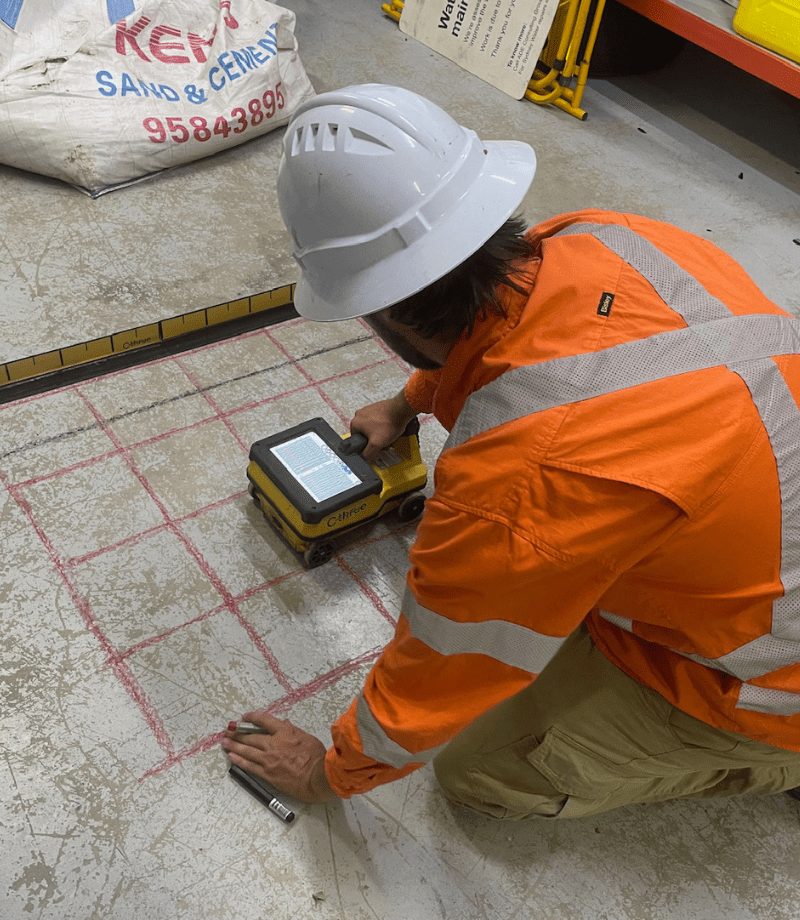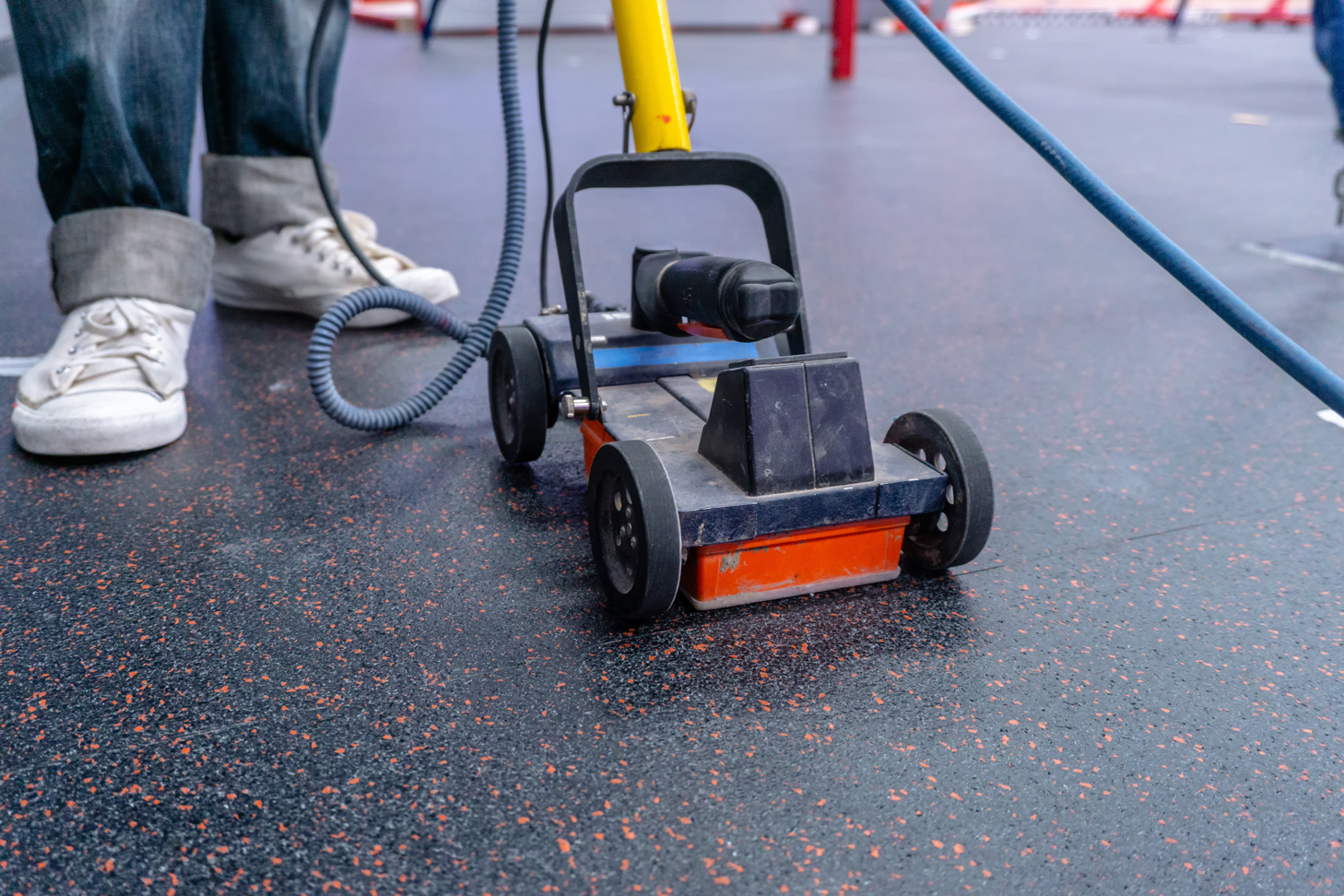In-Depth Insights into Concrete Scanning Procedures
In-Depth Insights into Concrete Scanning Procedures
Blog Article
Looking Into Accuracy: the Duty of Concrete Scanning in Enhancing Construction Safety and Efficiency
Concrete scanning, a modern technology that has obtained significant grip in the industry, plays a critical function in elevating these essential aspects of construction projects. The ramifications of concrete scanning expand much past surface-level advantages, promising a deep-seated effect on the total success of construction endeavors.
Relevance of Concrete Scanning Technology
Concrete scanning technology plays a critical role in making sure the safety and security and architectural honesty of building jobs. By making use of various scanning methods such as Ground Penetrating Radar (GPR) and electromagnetic induction, building and construction groups can spot embedded objects, rebar, conduits, and other prospective blockages within concrete frameworks before starting any kind of drilling or reducing tasks. This modern technology assists avoid unexpected damage to crucial infrastructure, reduces the risk of structural failings, and improves overall task performance.
Moreover, concrete scanning improves employee safety and security by giving accurate information regarding the condition of concrete aspects, permitting groups to prepare and carry out building and construction activities with precision. The ability to picture subsurface attributes in real-time allows project supervisors to make informed decisions, minimize possible risks, and adhere to predict timelines successfully. Additionally, by determining any kind of anomalies or defects beforehand, building and construction teams can execute corrective actions promptly, staying clear of expensive rework and delays in the construction process.
Fundamentally, the value of concrete scanning innovation hinges on its capability to protect construction projects, streamline procedures, and promote the highest possible requirements of security and high quality in the industry.
Enhancing Precaution on Website

Concrete scanning technology plays an essential role in improving safety and security by enabling building and construction teams to precisely find possible hazards such as rebar, conduits, and post-tension cable televisions installed within concrete frameworks. By recognizing these hazards ahead of time, employees can take needed preventative measures to stay clear of accidents during drilling, cutting, or coring activities. This positive technique not just safeguards the health of employees yet additionally helps in avoiding costly damages to the structure.
Integrating concrete scanning right into security procedures shows a dedication to focusing on safety and security on construction sites, ultimately resulting in much more effective and effective job results.
Optimizing Building And Construction Task Preparation
Efficient job preparation is important for the successful execution of building tasks. Optimizing building job intending involves a precise technique to organizing, source appropriation, and danger administration. By integrating these innovations into the planning phase, building teams can proactively attend to obstacles, boost control between different trades, and ensure that projects are completed on time and within spending plan.
Decreasing Job Hold-ups and Dangers
To minimize task hold-ups and threats, thorough preparation and aggressive threat management strategies are essential in the construction sector. Delays in construction projects can cause considerable financial losses, harmed reputations, and also security hazards. By making use of concrete scanning modern technology, building groups can determine prospective threats such as below ground utilities, rebar, or post-tension wires before they escalate right into expensive issues. This aggressive method allows for modifications to be made to the project strategy, lessening the likelihood of hold-ups because of unanticipated challenges.
Along with utilizing concrete scanning innovation, clear Visit Website interaction among job stakeholders is look at this site critical for identifying and attending to possible risks beforehand. Regular job conferences, updates on progress, and open channels for responses can help make sure that any kind of problems are without delay dealt with to avoid delays. Having backup strategies in area for usual threats in building and construction, such as adverse weather conditions or material shortages, can help mitigate the impact of these elements on job timelines. By focusing on planning and danger administration, building teams can minimize project hold-ups and threats, ultimately leading to more efficient and successful end results.
Improving Overall Efficiency and Performance
Offered the value of careful planning and proactive danger management in minimizing job delays and threats in building and construction, a concentrate on enhancing total effectiveness and performance ends up being imperative. Improving performance and efficiency in building and construction jobs involves simplifying processes, maximizing resource appropriation, and reducing downtime. Making use of advanced modern technologies like concrete scanning can substantially add to accomplishing these objectives. By accurately drawing up subsurface utilities and structures before excavation or drilling, possible clashes and rework can be prevented, conserving time and resources. In addition, real-time data offered by scanning modern technologies allows for quick decision-making on-site, minimizing hold-ups and enhancing efficiency. Improved performance also translates to much better job timelines, price savings, and improved client contentment. Purchasing tools and practices that prioritize effectiveness and efficiency not just advantages specific construction projects but also adds to the general development and success of the building and construction sector.

Verdict
In verdict, concrete scanning innovation plays a critical duty in boosting building and construction security and efficiency by boosting safety and security procedures on website, maximizing task preparation, lessening hold-ups and dangers, and eventually boosting overall efficiency. This modern technology is important for ensuring the successful conclusion of construction jobs while prioritizing the security of employees and reducing possible hazards. Its application can greatly benefit the building and construction industry in try here accomplishing greater levels of precision and performance.
Concrete scanning technology plays an important duty in guaranteeing the security and architectural honesty of construction jobs. In addition, by recognizing any issues or anomalies early on, construction teams can carry out rehabilitative measures quickly, preventing expensive rework and hold-ups in the building and construction procedure.
Efficient project planning is vital for the effective implementation of building and construction tasks. Spending in devices and techniques that focus on performance and productivity not only benefits individual construction projects but also adds to the overall growth and success of the construction industry.
In conclusion, concrete scanning technology plays an essential function in improving building security and effectiveness by improving safety steps on site, optimizing project planning, reducing hold-ups and threats, and eventually enhancing general efficiency. - Concrete Scanning
Report this page